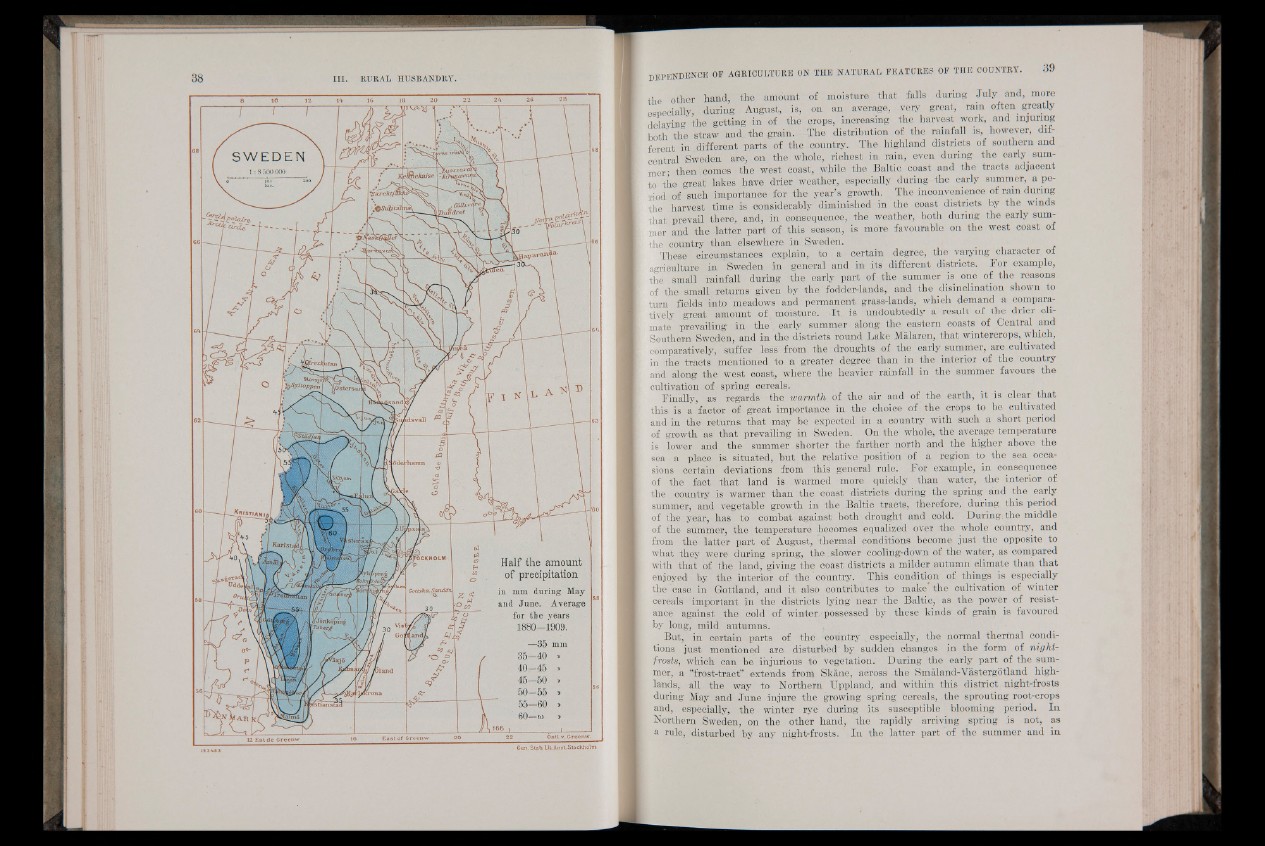
123*83 C e n . Slab . U t-An s t-S lo ck h o h n
the other hand, the amount of moisture that falls during July and, more
especially, during August, is, on an average, wery great, rain often greatly
delaying the getting in of the crops, increasing the harvest work, and injuring
both the straw and. the grain.. The distribution of the rainfall is, however, different
in different parts of the country. The highland districts of southern and
central Sweden are, on the whole, richest in. rain, even during the early summer;
then , comes the west coast, while the Baltic coast and the tracts adj'acent
to the great lakes have drier weather, especially during the early summer, a period
of such importance for the year’s growth. The inconvenience of rain during
the harvest time is considerably diminished in the coast districts by the winds
that prevail there, and, in consequence, the weather, both during the early summer
and the latter part of this season, is more favourable on the west coast of
the country than elsewhere in Sweden.
These circumstances explain, to a certain degree, the varying character, of
agriculture in Sweden in general and in its different districts. For example,
the small rainfall during the early part of the summer is one of the reasons
of the small returns given by the fodder-lands, and the disinclination shown to
turn fields into meadows and permanent grass-lands, which demand a comparatively
great amount of moisture. It. is undoubtedly a result of the drier climate
prevailing in the early summer along the eastern coasts of Central and
Southern Sweden, and in the districts round Lake Malaren, that wintercrops, which,
comparatively, suffer less from the droughts of the early summer, are cultivated
in the tracts mentioned to a greater degree than in the interior of the country
and along the west coast, where the heavier rainfall in the summer favours the
cultivation of spring cereals.
Finally, as regards the warmth of the air and of the earth, it is clear that
this is a factor of great importance in the choice of the crops to be cultivated
and-in the returns that may be expected in a country with such a short period
of growth as that prevailing in Sweden. On the whole, the average temperature
is lower and the summer shorter the farther north and the higher above the
sea a place is situated, but the relative position of a region to the sea occasions
certain deviations from this general rule. For example, in consequence
of the fact that land is warmed more quickly than water, the interior of
the country is warmer than the coast districts during the spring and the early
summer, and vegetable growth in the Baltic tracts, therefore, during this period
of the year, has to combat against both drought and cold. During the middle
of the summer, the temperature becomes equalized over the whole country, and
from the latter part of August, thermal conditions become just the opposite to
what they were during spring, the , slower cooling-down of the water, as compared
with that of the land, giving the coast districts a milder autumn climate than that
enjoyed by the interior of the country. This condition of things is especially
the case in Gottland, and it also contributes to make the cultivation of winter
cereals important in the districts lying near the Baltic, as the power of resistance
against the cold of winter, possessed by these kinds of grain is favoured
by long, mild autumns.
But, in certain parts of the country , especially, the normal thermal conditions
just mentioned are disturbed' by sudden changes in the form of night-
frosts, which can be injurious to vegetation. During the early part of the summer,
a “frost-tract” extends from Skane, across the Smaland-Vastergotland highlands,
all the way to Northern Uppland, and within this district night-frosts
during May and June injure the growing spring cereals, the sprouting root-crops
and, especially, the winter rye during its susceptible blooming period. In
Northern Sweden, on the other hand, the rapidly arriving spring is not, as
a rule, disturbed by any night-frosts. In the latter part of the summer and in